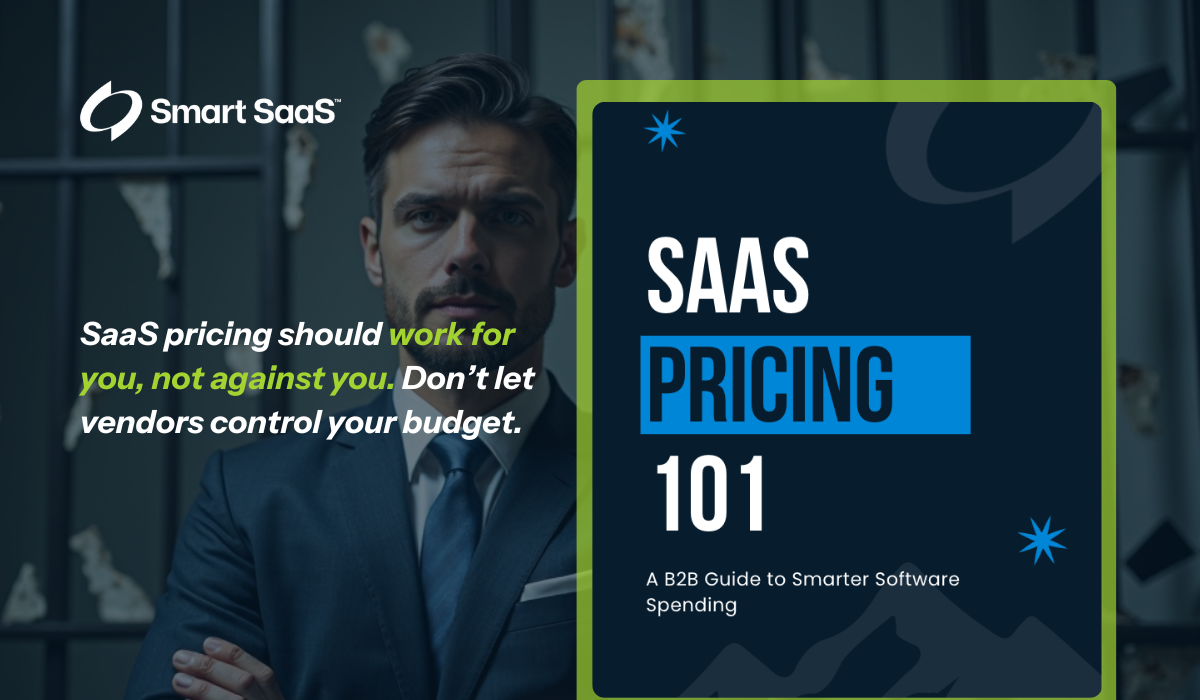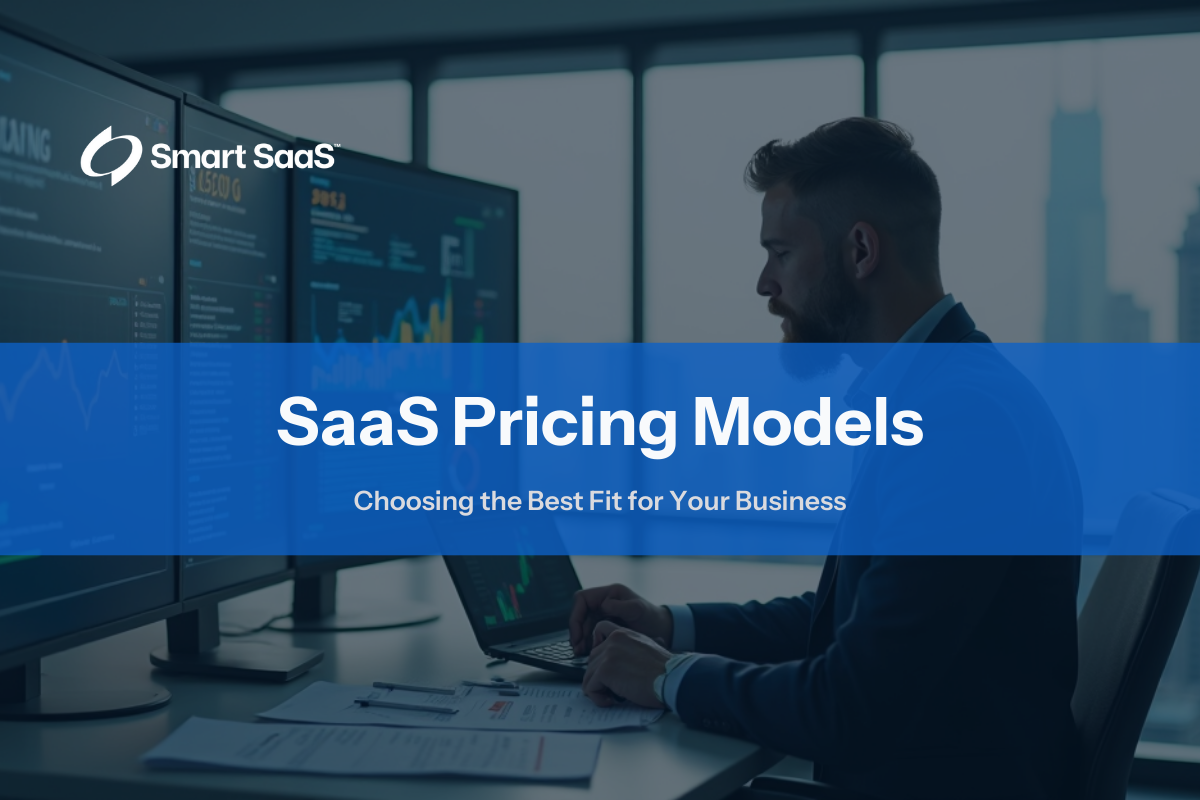

Tuesday, March 18, 2025
Kevin Anderson
Software as a Service (SaaS) has fundamentally changed how organizations purchase, deploy, and maintain software. Instead of large upfront costs and managing on‑premise infrastructure, businesses now embrace subscription pricing that distributes expenses over time. At the heart of this shift are various SaaS pricing models—from seat‑based billing to tiered plans and even usage‑based models. Selecting the ideal SaaS subscription pricing model is crucial for striking a balance between profitability and user satisfaction.
However, no single pricing formula fits every scenario—especially in B2B contexts where complexity, scale, and compliance can vary greatly across industries. This comprehensive guide will demystify the different SaaS pricing models (like tiered pricing, per‑user pricing, flat‑rate pricing, and freemium pricing), investigate why there’s no one‑size‑fits‑all approach to monetizing software, and explain how to develop a resilient SaaS pricing strategy aligned with your product’s value. By the end, you’ll be equipped to choose the most suitable software as a service pricing framework, driving healthy recurring revenue without alienating customers or stifling growth.

SaaS pricing transforms the conventional one‑time purchase model into a recurring subscription cycle, making software more accessible and easier to maintain. However, it also introduces new challenges, from selecting the right billing metric to ensuring customers understand the value behind each plan. Grasping these core principles is the first step toward aligning your product’s worth with a transparent and fair pricing framework. For further context, check out Digital Transformation.
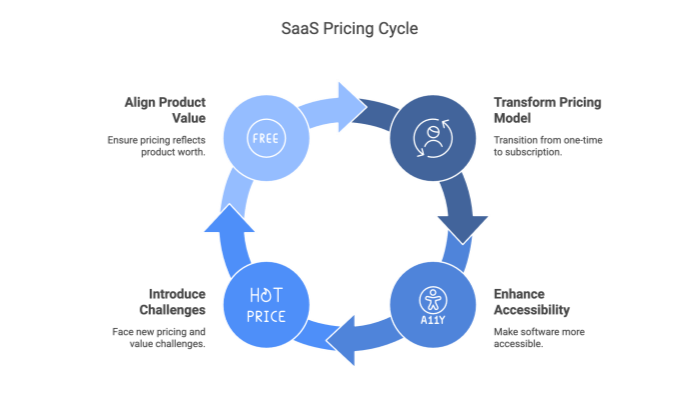

SaaS replaced the traditional perpetual‑license model with subscription pricing, typically billed monthly or annually. Customers can consistently receive software updates, feature enhancements, and support under one recurring fee. This arrangement aligns vendor success with user adoption, because if customers are dissatisfied, they can cancel easily—unlike in older software sales that locked them in at the time of purchase.
However, the ease of subscription can also mask complexity behind how charges scale, what’s included in each plan, and whether monetization strategies truly resonate with your target audience.
Companies must also outline recurring revenue forecasts, define usage or seat thresholds, and maintain clarity around hidden costs—if any. For more insights on managing subscriptions, see SaaS Billing Strategies.
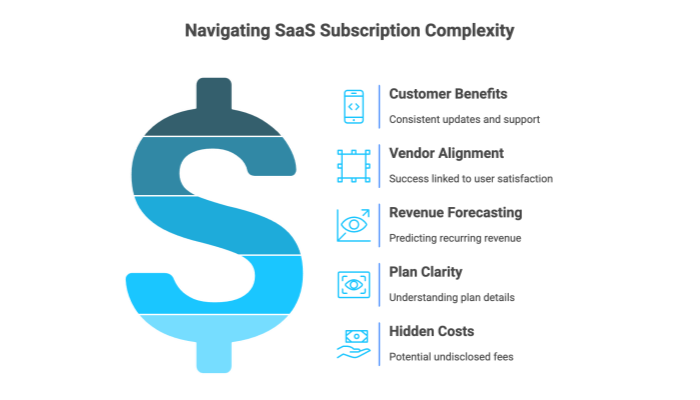

A SaaS pricing model is the systematic way you charge for ongoing access to your cloud‑based solution. Instead of large, one‑time fees, SaaS pricing focuses on continuous value delivery and corresponding charges over time. Common examples include per‑user pricing (where each seat has a set monthly cost), tiered pricing that bundles features, freemium tiers with optional paid upgrades, flat‑rate pricing for unlimited usage, and usage‑based approaches where customers pay by data volume or transactions.
For more details, see What is SaaS.


In a SaaS subscription pricing model, users pay periodically in exchange for updates, maintenance, and customer support. Payment can be monthly or annual, and vendors often encourage longer commitments with discounts. Plans typically differ in the features they include, usage limits, or user counts—sometimes forcing upgrades for additional capabilities.
Because it’s a subscription, your revenue is inherently recurring, giving you predictable cash flow while also making you vulnerable to churn if costs or features are misaligned with customer needs. For further insights, see Build a Successful SaaS Business Model.
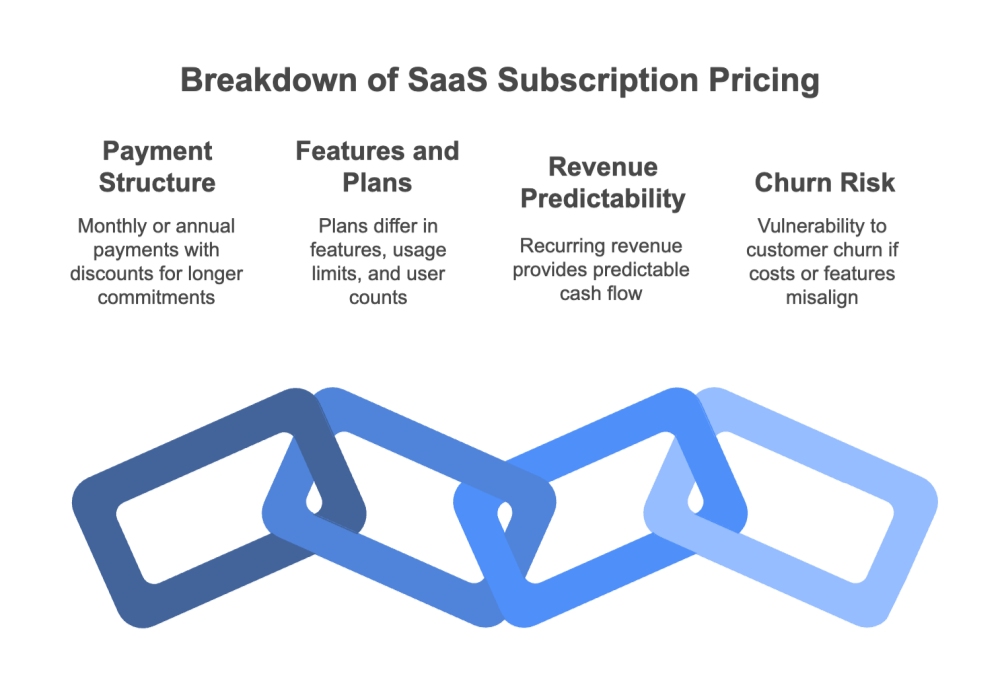

From pay‑per‑seat and tiered structures to usage‑based subscriptions, the ways SaaS vendors charge for their solutions are as varied as the products themselves. Each model balances different trade‑offs, including simplicity, perceived value, and potential upsell paths.
By assessing factors like feature depth, user count, and operational costs, businesses can match the right pricing model to their customers’ expectations and growth trajectories. For additional insights, see Vertical vs. Horizontal SaaS.
Per-user pricing, also called seat‑based pricing, charges customers for each individual who needs access. This straightforward structure is extremely common in solutions aimed at collaboration or direct user activity (like CRMs or project management tools).
In tiered pricing, you offer multiple subscription levels—Basic, Pro, and Enterprise, for example—each bundling features, usage limits, or support options.
Freemium offers a restricted version of your platform for free—perhaps capping user count, data volume, or advanced features. When users outgrow the free tier, they pay to access more robust options.
A flat‑rate model sets a single, uniform subscription fee covering all features and usage. Customers don’t have to worry about seat counts or usage overages.
Pay‑as‑you‑go ties fees to actual consumption, whether measured by data volume, transactions processed, or API calls.
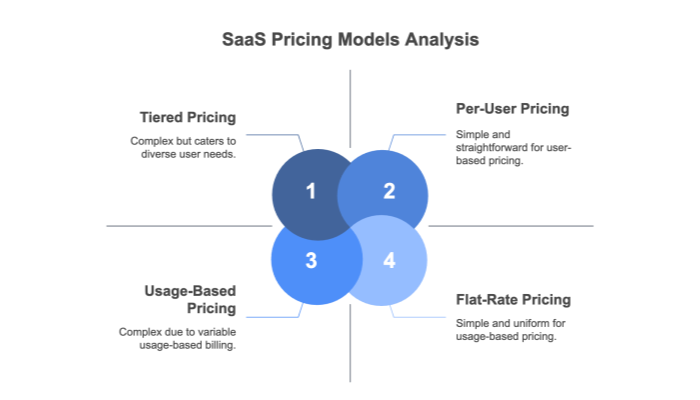

B2B software environments vary widely in user size, compliance demands, and customization needs—factors that prevent any single pricing approach from reigning supreme. One company may benefit from seat‑based billing, while another depends on usage‑based tiers to accommodate sporadic data spikes. As the market evolves, businesses must blend or tweak models to capture the unique value each client seeks.
B2B customers vary wildly in scale, budget, and workflow complexity. A small startup might prefer cost certainty through a flat‑rate or seat‑based arrangement, while a large enterprise with thousands of employees might recoil at the expense of seat‑based models. Each buyer’s distinct goals push them to favor different pricing structures.
B2B SaaS spans multiple verticals—finance, healthcare, logistics, retail—each with unique compliance or usage patterns. A healthcare analytics SaaS might revolve around patient data, requiring advanced security and HIPAA compliance, while a marketing automation tool might serve ROI‑driven small agencies that start with a freemium approach. Such differences make a universal pricing template unlikely.
Many B2B SaaS ventures find that combining tiered pricing with optional usage‑based modules sets them apart from competitors who stick solely to seat‑based models. Others adopt a freemium tier to stand out in a crowded market, hoping to upsell advanced features later. This dynamic environment forces vendors to continually test and refine their pricing approaches.
Even a single B2B client can experience drastic changes in usage or team size over time. If your pricing isn’t flexible—for example, if it forces large jumps between tiers—customers might churn or switch to alternative solutions. The best pricing plan for one year might feel restrictive the next, necessitating continuous iteration.
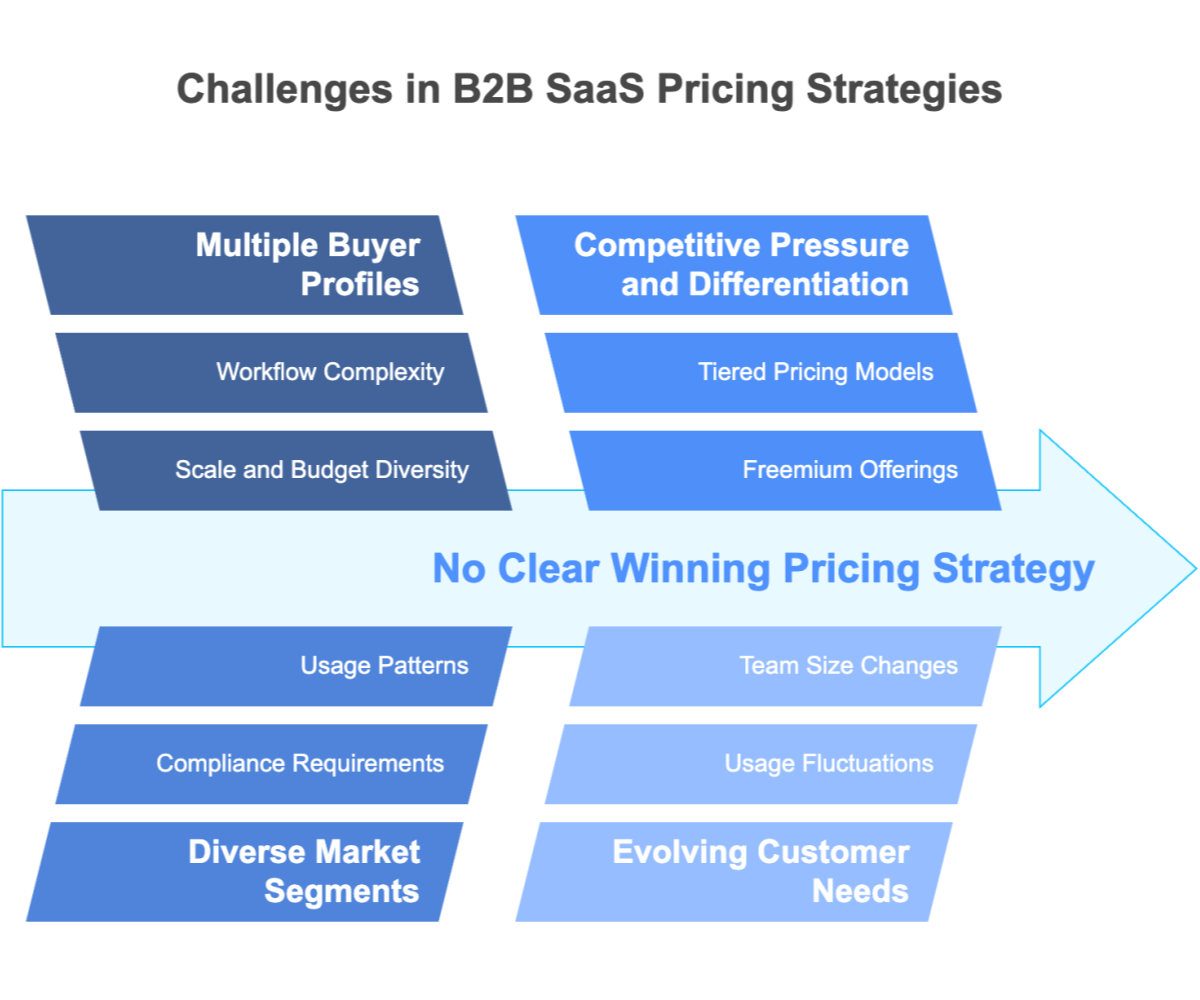

Effective SaaS pricing hinges on balancing recurring revenue with customer satisfaction. It’s not just about setting a number; it involves finding the right metrics, segmentation, and communication tactics to convey clear value.
By ensuring transparency, users feel confident in the costs, leading to higher retention, predictable growth, and deeper trust in your solution. For further perspective, check out Vertical SaaS Innovation and What is a SaaS Environment.
Psychological pricing techniques—such as using .99 endings or tier names like “Pro” or “Premium”—can subtly influence buyer perception. Offering small annual discounts or employing anchoring strategies, where a high-priced plan makes your mid‑tier appear more affordable, are effective tactics to drive conversions.
Continuous iteration through dynamic pricing experiments or A/B testing helps you fine-tune your model. Testing different price points or packaging with real users can uncover surprising insights, such as hidden willingness to pay for advanced features or the impact of a modest price reduction on tier upgrades.
For large B2B clients, linking costs directly to ROI—such as charging a percentage of additional revenue generated—can be highly effective. This model requires robust data tracking but ensures that pricing is aligned with the client’s success.
A sustainable pricing strategy balances new customer acquisition with maintaining existing customers. Offering a moderate baseline plan with a clear upgrade path helps prevent churn and encourages long-term loyalty. Satisfied customers can become brand advocates, fueling organic growth.
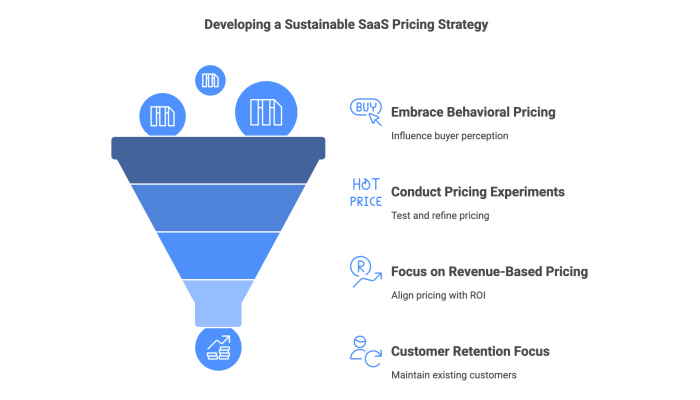

Developing a pricing model is an iterative process that starts by identifying your product’s value drivers and ends with continuous refinement based on user feedback. Along the way, you’ll research competitor landscapes, map out potential tiers, and test assumptions through pilot programs or early adopters.
This structured approach lets you adjust quickly, ensuring your final model fits both current market realities and the evolving demands of your customer base. For more details, see How to Structure SaaS Pricing Tiers.
Before pinning down seat counts or usage thresholds, ask yourself how customers realize ROI with your software. If your tool drives productivity for each additional user, seat-based fees might make sense. If you’re delivering a data processing platform, usage-based pricing might better reflect the real costs and benefits. The objective is to align pricing with your product’s core value proposition, ensuring customers feel the cost is proportionate to their gains.
Look at how others in your niche price their offerings. If you spot a universal approach—like seat-based plus tiered features—maybe you can differentiate with a usage-based angle for cost-sensitive or seasonal clients. Alternatively, if most competitors rely on monthly subscriptions, consider offering an annual discount to secure longer commitments and reduce churn.
Rarely is your user base homogeneous. Some customers might be small teams needing basic analytics; others might be large enterprises requiring advanced security, single sign-on, or specialized compliance. Segment your market to decide how many tiers you’ll need, or whether usage‑based expansions might better serve larger customers. Tailoring your pricing to meet diverse needs ensures a more precise and effective model.
Pricing inevitably requires trial and error. Start by offering pilot programs or special deals to smaller cohorts. Examine how many users adopt the entry‑level tier versus mid‑tier or premium plans. Track churn reasons—whether customers leave because they can’t afford the next tier or because per‑user fees seem too high compared to competitors. Real user feedback often uncovers hidden friction points that theoretical models might miss.
No matter which SaaS pricing model you choose, hidden fees or complicated upgrade paths breed dissatisfaction. Provide usage dashboards for pay‑as‑you‑go plans so customers can monitor their consumption. Clearly spell out what each tier includes, and itemize additional costs such as support fees or data overages. Removing guesswork reduces frustration and builds trust.
Your SaaS pricing strategy isn’t static. Over time, new features may justify separate add‑ons or fresh tier definitions. Market changes could push you toward usage‑based components if your user base grows dramatically. Alternatively, if many smaller customers request advanced modules, consider offering a mid‑tier bridging plan to capture more revenue without alienating users. Continually monitor key metrics such as MRR, upgrade patterns, and competitor moves, and adjust your model accordingly.
By systematically applying these steps, you can develop a flexible, customer‑centric pricing model that supports recurring revenue growth and long‑term user loyalty.


SaaS pricing models come in many variations—per‑user, tiered, freemium, flat‑rate, and usage‑based among them. No single structure guarantees success, especially in B2B scenarios where users have diverse needs, regulatory constraints, or large‑scale deployments. It’s vital to tie your SaaS pricing strategy directly to your product’s value proposition, ensuring your chosen pricing framework feels transparent, adaptable, and fair to the end user.
While it may be tempting to copy a competitor’s approach, your best bet is to segment your audience, pick or blend the model(s) that best match your solution’s unique benefits, and remain open to iteration. Ultimately, a sound monetization strategy is about satisfying current customers, attracting new ones, and maintaining stable recurring revenue growth. By mastering these fundamentals and focusing on user‑centered design, you’ll be well‑positioned to stand out among countless SaaS offerings and keep your customers engaged for the long haul. For additional strategies, see SaaS Security Key Challenges and Effective Solutions.
